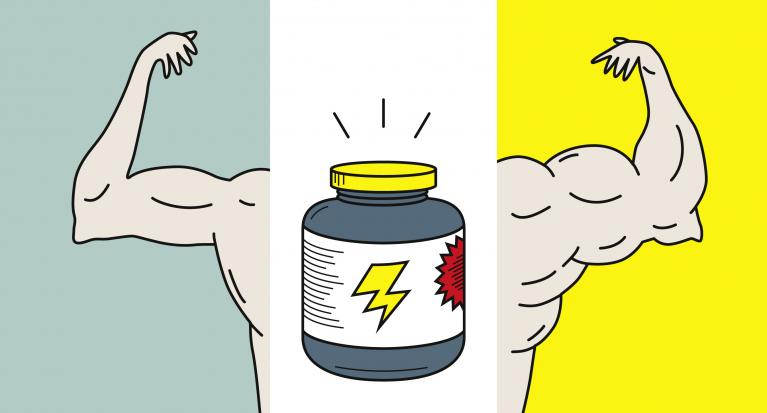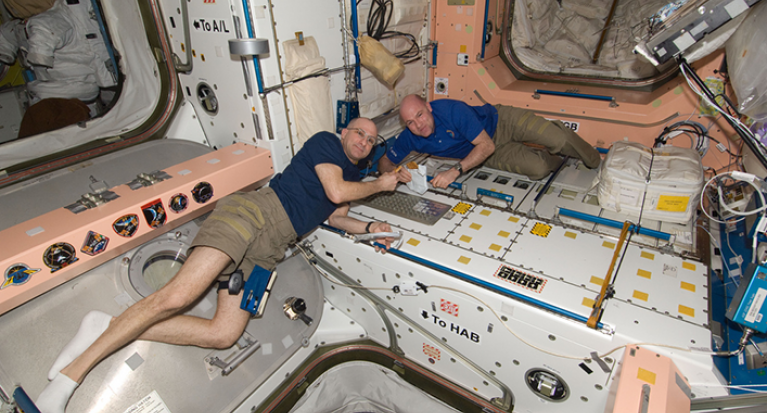War meals
What soldiers eat today.
Italian army ration.
© Guardian News and Media Limited
Packaged in compact individual portions, army food may well seem bleak. Yet it reflects – albeit minimally – the specialties of each country. There is, of course, no room for gourmet pleasure and not even the shot of Grappa given to Italian soldiers can convince them otherwise. Emma Graham Harrison from The Guardian compared the military rations given to armed forces from eleven nations stationed in Kabul, Afghanistan. A glance at the photos of the ration packs distributed in early 2014 immediately reveals whom they are for: minestra di pasta, cheddar cheese, knäckebröd, salmon fillet, goulash with potatoes, cassoulet, peanut butter… Every nation has its favourites. Yet logistics services around the world share the same aim: to provide enough to eat no matter what the conditions.
Corned beef or “monkey meat”?
Feeding soldiers in prolonged combat is no easy feat. Besides the fact that conditions may well be adverse – snowy, mountainous, extremely arid and/or humid – troops may not have the time or the equipment for cooking. This is where “monkey meat” proved useful! This small tin of beef preserved in brine, with a close resemblance to cat food and an unappetizing odour, could be heated up or even eaten cold. It sustained soldiers throughout World War II and was the exemplary solution for the difficulty of providing healthy food to soldiers carrying out strenuous tasks in stressful situations. Such nourishment needs to be balanced, tasty and attractive, lightweight, compact and waterproof, as well as easy and fast to prepare! Although a tin of corned beef could be kept for a long time and filled ravenous stomachs, over time it was viewed with revulsion.
Weight loss and deficiencies
The K ration proposed by the American army from 1942 onwards was far more appetizing (see picture in the right column). It was composed of three standard light but varied meals, all of whose ingredients contained a minimum of water: biscuits, processed cheese, a bouillon cube, dried fruit, chocolate, tinned meat, coffee and sugar, etc. Although originally intended for soldiers on short missions, the K ration provided daily sustenance to troops for months on end. Yet its 2830 kilocalories a day proved insufficient. Soldiers not only lost weight but, even worse, they lacked vitamins and this made them more prone to illness. Their meals needed to be supplemented, with fresh fruit in particular.
24 meals for American GIs
Today, the armed forces pay attention to the appearance and taste of food and not just to whether it replenishes energy. The American army has developed 24 types of rations, enriched in vitamins and mineral salts, providing 1250 kilocalories per meal, of which 36% are fat and 51% carbohydrates. France, the home of gourmet cooking, offers its troops twelve different menus, comprising 3200 kilocalories per day, with a similar proportion of fat and carbohydrates as found in American ration packs. Since eating is above all a convivial act that raises morale, GIs may also share a specially-designed ration pack that feeds eighteen with the simplest of preparation: four separate containers with meat, starchy foodstuffs, vegetables and a dessert can be heated up in half an hour by pulling a tab that activates a saline solution.
Italy
© Guardian News and Media Limited
The Italian ration pack contains a breakfast shot of 40% alcohol cordiale, a powdered cappuccino, lots of biscotti, and a disposable camping stove for heating parts of the meal, including a pasta and bean soup, canned turkey and a rice salad. Dessert is a power sport bar, canned fruit salad or a muesli chocolate bar.
France
© Guardian News and Media Limited
A streamlined but sophisticated French ration pack offers soldiers deer pâté, cassoulet with duck confit, creole-style pork and a crème chocolate pudding. There is also a disposable heater, some coffee and flavoured drink powder, muesli for breakfast and a little Dupont d'Isigny caramel.
Germany
© Guardian News and Media Limited
The German ration pack contains several sachets of grapefruit and exotic juice powder to add to water, and Italian biscotti, but also more familiar treats such as liver-sausage spread and rye bread, goulash with potatoes, and for breakfast sour cherry and apricot jams.
UK
© Guardian News and Media Limited
The British pack is dotted with familiar brands from Kenco coffee and Typhoo tea to a mini bottle of Tabasco. The main courses include the British favourite, chicken tikka masala, and a vegetarian pasta. There's also pork and beans for breakfast, and lots of sweets and snacks from trail mix to an apple "fruit pocket" that looks like it might not be out of place in a school lunchbox. Plus packets of Polos and, of course, plenty of teabags.
Australia
© Guardian News and Media Limited
The Australian ration pack has more small treats than any of the others. Most of it is packaged by the military, from a serving of love-it-or-hate-it Vegemite to jam sandwich biscuits and a tube of sweetened condensed milk. The bag includes a can-opener-cum-spoon for getting at the Fonterra processed cheddar cheese, and main meals of meatballs and chilli tuna pasta. There are lots of sweets and soft drinks, and two unappetising-looking bars labelled "chocolate ration".
Spain
© Guardian News and Media Limited
The Spanish lunch pack has cans of green beans with ham, squid in vegetable oil, and pate. There is also a sachet of powdered vegetable soup, peach in syrup for dessert and crackers handed out to go with the meal in place of bread (not shown). There is a disposable heater with matches and fuel tabs, as well as lots of tablets: Vitamin C, glucose, water purification, and rehydration.
US
© Guardian News and Media Limited
Almond poppy seed pound cake, cranberries, spiced apple cider (the hot US non-alcoholic drink) and peanut butter and crackers make up this very American meal package. The main – pasta with vegetable "crumbles" in spicy tomato sauce – is less traditional, but the "flameless heater" shows off American tech skills – just add water to the powder in a plastic bag and it heats up enough to warm the plastic meal pouch.
Canada
© Guardian News and Media Limited
Following photographs: © Davide Levene forThe Guardian.
While there are Bear Paws snacks in the Canadian ration pack, there's the shocking omission of maple syrup. You have the choice of salmon fillet with Tuscan sauce or vegetarian couscous for the main meal. There is also the makings of a peanut butter and jelly (raspberry jam) sandwich for breakfast.
Norway
© Guardian News and Media Limited
The Norwegian pack has American technology (the flameless heater) but British tastes. There is Earl Grey tea, beans and bacon in tomato sauce, a golden oatie biscuit and Rowntree's Tooty Frooties.
Estonia
© Guardian News and Media Limited
Stuffed peppers, chicken-meat pâté, smoked sprats, and liver sausage with potatoes make an eclectic menu here. Plus, crispbreads on the side, and halva with vanilla for dessert. Breakfast is muesli, a fruit pocket and honey.
Singapore
© Guardian News and Media Limited
The offerings in the Singapore pack were sparse despite its reputation for high-quality cuisine. There were a paltry three dishes, of Szechuan chicken noodles; a mushroom, basil, rice and chicken dish; and soya milk with red-bean dessert. The Singapore pack is, in fact, only the main pack. In addition each Singaporean soldier receives an "accessory" pack as part of a 24-hour ration package, which includes canned drinks, energy bars, isotonic drinks powder, tinned food, instant noodles, biscuits, "candy", instant tea and coffee, tissue paper, and heating packs.
DOSSIER Optimising Nutrition |
| Fortifying staple foodstuffs | |
| Targeted nutrition and sport | |
| War meals | |
| Brief History of Eating in space | |
| All dossiers | |
The collection of the Alimentarium contains many historic items related to food ration for soldiers.
Objects
Advertising posters
"Three-year pizza"
For soldiers on the ground, one of the most important recent breakthroughs in military technology may be the "three-year pizza", described by its scientist creators as the "holy grail" of ration-pack food.
Pizza is the most asked-for dish when troops are quizzed on what they would like to see in their supplies, but it has taken years of research to come up with a slice that tastes like the real thing, yet can sit on the shelf without the tomato sauce turning the crust soggy or mould growing on the cheese. Read the full article from stripes.com



